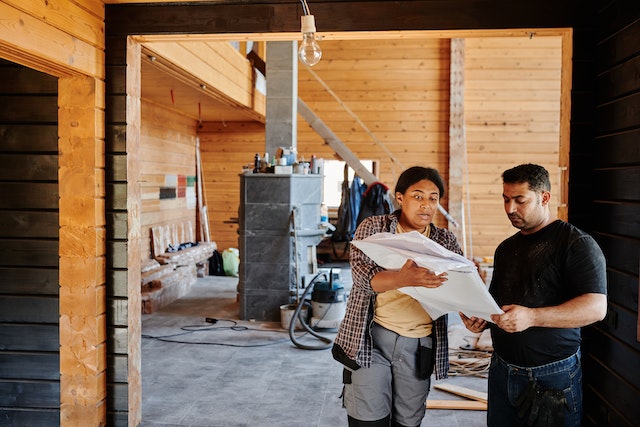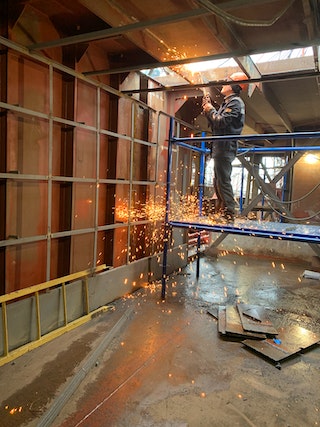
Climate change, with its unrelenting impact, poses unique challenges to societies and demands urgent action. To address this issue, a paradigm shift toward climate-resilient infrastructure has emerged as a crucial pathway toward sustainable development.
Climate-resilient infrastructure refers to the design, construction, and management of physical structures that are capable of withstanding and adapting to extreme weather events and long-term climate changes. It goes beyond mere durability, encompassing flexibility, strategic planning, and systemic resilience. By integrating climate considerations into the development of infrastructure, societies can mitigate risks, enhance adaptation measures, and build a more resilient future.
The importance of climate-resilient infrastructure cannot be overstated. As the frequency and intensity of climate-related events, such as hurricanes, floods, and droughts, continue to rise, conventional infrastructure is increasingly vulnerable. Disruptions can lead to severe economic losses, displacement of communities, and long-lasting environmental degradation.
Climate Change Impacts on Infrastructure
Climate change has become an existential threat, pushing societies to reevaluate their approach to infrastructure development. The effects of climate change are far-reaching and have direct consequences on the resilience of existing and future infrastructure systems.
Rising Sea Levels and Coastal Infrastructure
Coastal Erosion: Climate change-induced sea level rise accelerates coastal erosion, jeopardizing coastal infrastructure such as harbors, ports, and coastal roads. Without adequate protection, these essential assets face the risk of being rendered inadequate or even unusable in the face of constant battering from storm surges and rising tides.
Saline Intrusion: As sea levels rise, coastal regions are prone to saline intrusion into freshwater sources, which can affect water supply systems and agricultural infrastructure. The infiltration of saltwater into freshwater aquifers can lead to the corrosion of pipes, pumping stations, and irrigation systems, impairing their functionality and reliability.
Extreme Weather Events and Infrastructure Vulnerability

Increased Frequency and Intensity of Storms: Climate change exacerbates the ferocity and frequency of storms, imposing severe strain on infrastructure systems. Infrastructure such as roads, bridges, and power grids are susceptible to damage caused by high winds, heavy rainfall, and storm surges, leading to service disruption and economic losses.
Flooding: Intense rainfall events and rising sea levels contribute to a higher risk of floods.
Floods can severely damage transportation systems, utilities, and other critical infrastructure, disrupting daily life atnd hindering emergency response efforts.
Temperature Extremes and Infrastructure Performance
Heat Stress on Transportation Infrastructure: Rising temperatures increase the risk of heat stress on transportation infrastructure, particularly on roads and railways. The expansion and contraction of materials under extreme temperatures can lead to road buckling, track misalignment, and increased maintenance needs.
Impact on Energy Infrastructure: High temperatures can strain energy infrastructure, such as power plants, by reducing their efficiency and, in some cases, causing shutdowns due to cooling water availability. The reliability of electrical transmission and distribution systems may also be compromised, affecting energy supply to communities.
The Concept of Climate-Resilient Infrastructure
In this rapidly evolving era of climate change, the concept of climate-resilient infrastructure has emerged as a beacon of hope amidst the mounting challenges. Climate-resilient infrastructure encompasses a holistic approach to designing, constructing, and managing physical structures that can withstand the impacts of climate change and contribute to sustainable development.
An Integrated Approach to Design
Climate-resilient infrastructure is rooted in the principle of flexibility, enabling structures to adapt and adjust to changing climate conditions. It entails designing infrastructure systems that can modify their functionality, capacity, and design standards over time, ensuring their continued effectiveness in the face of shifting climate patterns.
Building climate-resilient infrastructure necessitates comprehensive strategic planning and rigorous risk assessment. It involves analyzing projected climate scenarios, understanding vulnerability hotspots, and identifying critical areas that require priority attention.
By embracing proactive planning, infrastructure developers can take into account potential climate threats and ensure that their projects are designed to withstand them.

The Power of Systems Thinking
Climate-resilient infrastructure transcends the boundaries of individual projects and embraces the interconnectedness of systems. It recognizes that infrastructure systems are not standalone entities but are interdependent, meaning that vulnerabilities in one system can create cascading effects on others. By considering the complex interdependencies, climate-resilient infrastructure aims to enhance overall system resilience and reduce vulnerabilities.
One of the key aspects of climate-resilient infrastructure lies in its multi-functional design approach. It involves integrating various infrastructure components, such as transportation, energy, and water systems, to maximize their potential benefits. For instance, integrating renewable energy into transportation infrastructure not only reduces greenhouse gas emissions but also enhances energy security and resilience.
Collaboration and Engagement
Climate-resilient infrastructure is not a singular endeavor but requires collaborative efforts from various stakeholders, including governments, policymakers, engineers, architects, and local communities. It involves engaging with communities to understand their needs, incorporating their knowledge and experience in the planning process, and fostering shared ownership of infrastructure projects. Collaboration and engagement enhance the inclusivity and sustainability of climate-resilient infrastructure, ensuring that it serves the needs of all members of society.
Building Long-Term Resilience
Climate-resilient infrastructure is not a short-term fix but an investment in the future. It focuses on building resilience that can withstand the test of time, considering the long-term impacts and uncertainties associated with climate change. This requires an ongoing commitment to regular monitoring, maintenance, and adaptation of infrastructure systems as new climate challenges emerge.
Unlocking Sustainable Development Potential
Climate-resilient infrastructure holds immense potential in driving sustainable development. Beyond its resilience to climate impacts, it can contribute to sustainable urbanization, promote low-carbon development, and foster economic growth.

By integrating climate considerations into infrastructure planning and development, societies can create infrastructure that not only stands strong against climate change but also supports social, economic, and environmental well-being.
Strategies for Climate-Resilient Infrastructure
- Climate Vulnerability Assessment
To develop climate-resilient infrastructure, it is crucial to conduct a comprehensive climate vulnerability assessment. This assessment involves analyzing historical climate data, predicting future climate scenarios, and understanding the specific vulnerabilities of the area under consideration. By identifying the potential impacts of climate change, such as sea-level rise, extreme weather events, and temperature increases, planners can make informed decisions about infrastructure design and development.
- Risk Management
Integrating risk management strategies into infrastructure planning is essential for building climate resilience. This involves identifying and prioritizing risks, considering potential cascading effects, and developing contingency plans. By assessing the probability and severity of different climate-related risks, infrastructure developers can allocate resources effectively and proactively prepare for potential disruptions.
Resilient Design and Construction
Nature-Based Solutions: Nature-based solutions, such as green infrastructure and ecosystem restoration, are essential components of climate-resilient infrastructure. Incorporating natural elements, such as green roofs, urban forests, and wetlands, into urban planning can help mitigate the impacts of climate change. These solutions reduce flood risk, regulate temperature, improve air quality, and enhance overall resilience.
Adaptive Design: Infrastructure projects should incorporate adaptive design principles, which allow structures to adjust and evolve in response to climate change impacts. This includes flexible building materials, modular construction techniques, and the consideration of future expansion and modification needs. Adaptive design ensures that infrastructure can withstand changing climate conditions and remain functional over its lifespan.
Capacity-Building and Governance
Developing technical expertise in climate-resilient infrastructure is essential for effective planning, design, and construction. Governments, academic institutions, and professional organizations should invest in training programs and knowledge-sharing initiatives to build the necessary capacity among engineers, architects, and planners.

Strong governance and supportive policy frameworks are crucial for promoting climate-resilient infrastructure. Governments should establish regulations and incentives that encourage the integration of climate considerations into infrastructure projects. This includes mandating climate risk assessments, providing financial support for resilience investments, and promoting public-private partnerships for infrastructure development.
Stakeholder Engagement and Communication
Engaging with local communities and incorporating their knowledge, needs, and perspectives is vital for developing climate-resilient infrastructure. Communities often have valuable insights into the vulnerabilities and priorities of their area, and their engagement fosters ownership and resilience at the local level.
Raising public awareness and educating communities about the importance of climate-resilient infrastructure can foster support and participation. Communicating the benefits, risks, and long-term value of such infrastructure can empower individuals to demand resilient solutions and hold decision-makers accountable.
Measuring and Assessing Resilience
Understanding and measuring the resilience of climate-resilient infrastructure is a crucial aspect of ensuring its effectiveness and long-term sustainability. By evaluating and assessing the resilience of infrastructure projects, stakeholders can identify strengths, weaknesses, and areas for improvement.
- Climate Risk Assessment: Conducting a comprehensive climate risk assessment is an essential step in measuring the resilience of infrastructure. This assessment involves identifying potential climate-related hazards, vulnerabilities, and impacts that the infrastructure project may face. By analyzing historical climate data, future climate projections, and vulnerability hotspots, stakeholders can better understand the risks and design appropriate adaptation measures.
- Performance Indicators: Developing and implementing performance indicators is an effective way to assess the resilience of climate-resilient infrastructure. These indicators provide quantitative and qualitative measures of infrastructure performance under different climate scenarios. Examples of performance indicators include energy efficiency, reliability, adaptability, and ability to withstand extreme events. By tracking and monitoring these indicators, stakeholders can identify areas that need improvement and evaluate the success of resilience measures.
- Economic Analysis: Conducting cost-benefit analysis and economic assessments is crucial for measuring the resilience of climate-resilient infrastructure. This analysis evaluates the economic viability and long-term value of infrastructure projects by considering the costs of construction, maintenance, and potential losses due to climate-related disruptions. By comparing the costs and benefits, stakeholders can assess the economic resilience of infrastructure projects.
- Social and Community Resilience: Measuring the social and community resilience of climate-resilient infrastructure involves considering the impacts on local communities and their ability to adapt and recover from climate-related events. Stakeholders can assess factors such as community engagement, inclusivity, and social cohesion within infrastructure projects. Additionally, evaluating the accessibility and reliability of infrastructure services for vulnerable populations is crucial for ensuring equitable resilience.

- Environmental Sustainability: Measuring the environmental sustainability of climate-resilient infrastructure involves evaluating the project’s impact on natural resources, biodiversity, and ecosystem services. Stakeholders can assess indicators such as carbon emissions, water consumption, and habitat preservation to measure the environmental resilience of infrastructure projects. Integrating nature-based solutions and sustainable design principles can further enhance the environmental sustainability of climate-resilient infrastructure.
- Monitoring and Evaluation: Implementing a robust monitoring and evaluation system is essential for continuously measuring and assessing the resilience of climate-resilient infrastructure. This system involves regularly monitoring the performance indicators, collecting data using relevant technology, and analyzing the results. By regularly evaluating the effectiveness of resilience measures, stakeholders can make informed decisions for future infrastructure development and adaptation.
Climate-resilient infrastructure is not only crucial for addressing the challenges posed by climate change but also holds immense potential for driving sustainable development. It is not a singular endeavor but requires collaboration, engagement, and ongoing commitment from various stakeholders. It is an investment in the future, focusing on building resilience that can withstand the test of time and support social, economic, and environmental well-being.


